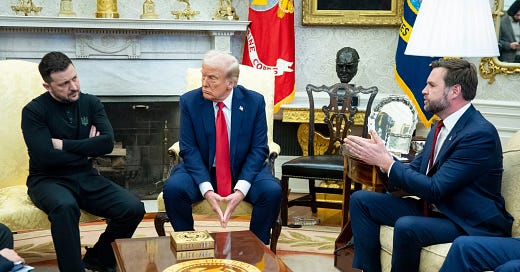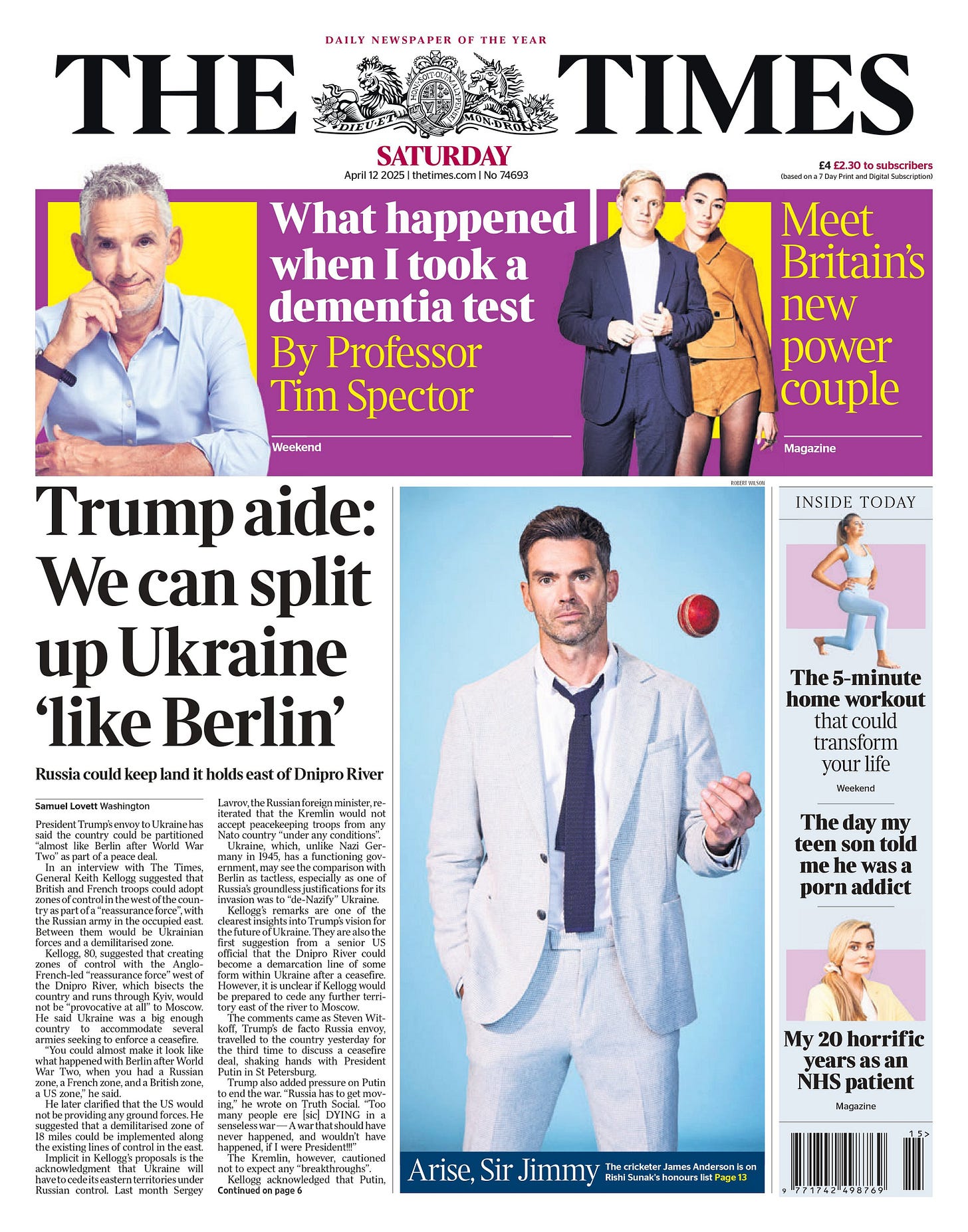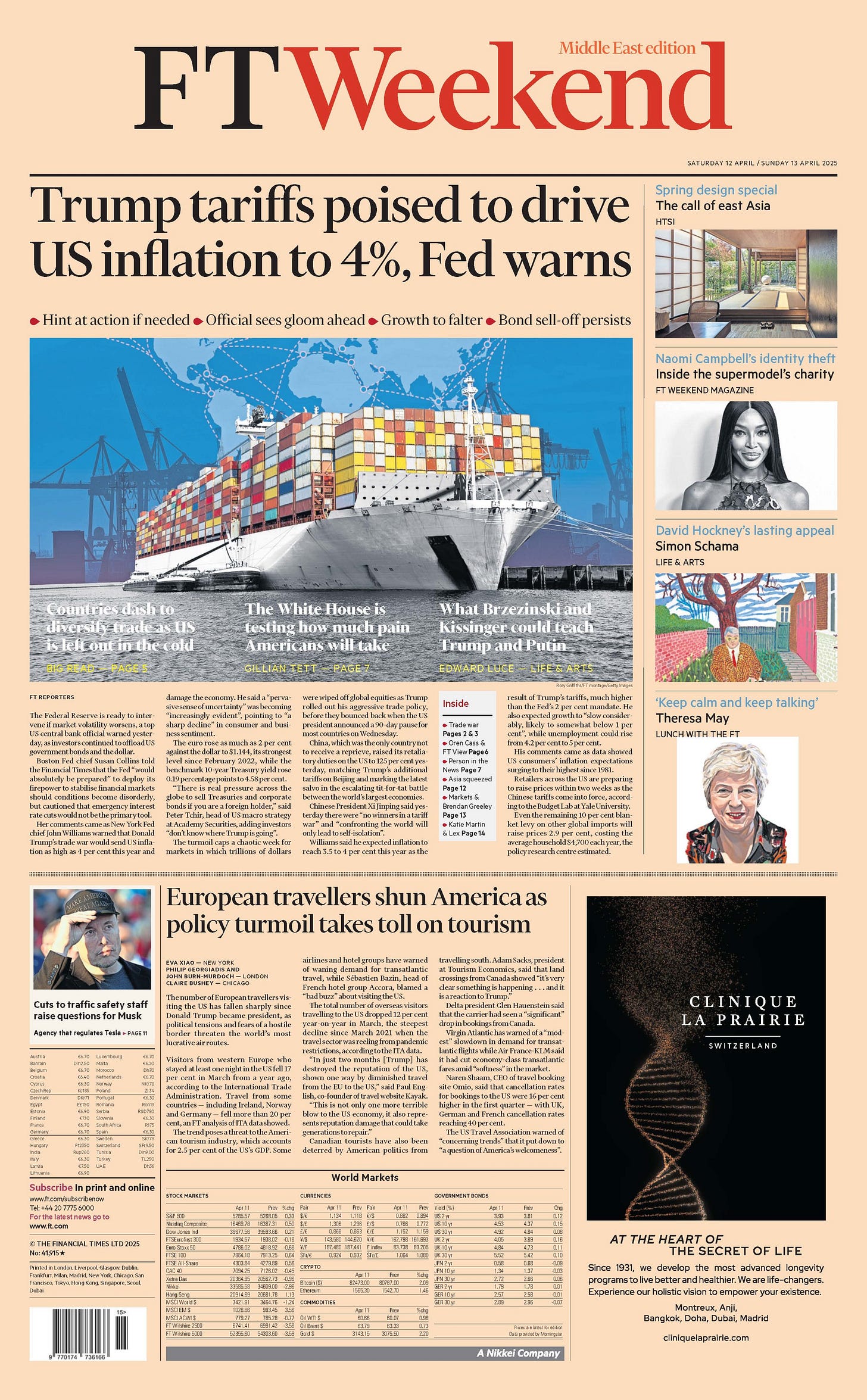Partition of Ukraine Moves From Theory to Possibility
Trump Envoy Reportedly Suggested Dnipro River as Potential Ceasefire Demarcation Line in Ukraine
Donald Trump's Ukraine envoy Keith Kellogg has reportedly suggested Ukraine could be partitioned. The Times said that, during an interview with the paper, Kellogg had proposed British and French troops could adopt zones of control in the west of Ukraine as part of a "reassurance force". Russia's army, he reportedly suggested, could then remain in the occupied east. "You could almost make it look like what happened with Berlin after World War Two", the paper quoted him as saying. Kellogg later took to social media to say the article had "misrepresented" what he said. "I was speaking of a post-ceasefire resiliency force in support of Ukraine's sovereignty," he wrote on X, adding: "I was NOT referring to a partitioning of Ukraine." Neither the White House nor Kyiv reacted to the comments immediately. The BBC has asked the Times for its response. Earlier, US envoy Steve Witkoff met Vladimir Putin in St Petersburg on Friday, as Trump urged the Russian president to "get moving" on a ceasefire in Ukraine. The Kremlin said the meeting lasted for more than four hours and focused on "aspects of a Ukrainian settlement". The talks, Witkoff's third with Putin this year, were described by special envoy Kirill Dmitriev as "productive". Trump has expressed frustration with Putin over the state of talks. On Friday, he wrote on social media: "Russia has to get moving. Too many people ere [sic] DYING, thousands a week, in a terrible and senseless war." - BBC
According to The Times reporting, Kellogg suggested that Ukraine will have to ceded its eastern territories under Russian control. The newspaper wrote: “Kellogg’s remarks are one of the clearest insights into Trump’s vision for the future of Ukraine. They are also the first suggestion from a senior US official that the Dnipro River could become a demarcation line of some form within Ukraine after a ceasefire. However, it is unclear if Kellogg would be prepared to cede any further territory east of the river to Moscow.”
My comment: A few weeks ago, both on air and online, I raised the idea that the Trump administration and Russia were signaling interest in partitioning Ukraine. Vladimir Putin has made clear he wants full control of the four oblasts where Russia has a presence—Luhansk, Donetsk, Zaporizhzhia, and Kherson. In the latter two, Russia holds only partial territory, meaning any Ukrainian president agreeing to such terms would, with a single pen stroke, consign millions to life under Russian occupation. Many Ukrainians have described that life to me as “hell on earth.”
I’ve said it before: under Trump, the U.S. has become an unreliable interlocutor. Kyiv might be better off asking the Saudis—or even better, the Turks—to broker a ceasefire. After all, they’ve got Putin on speed dial too.
A Ukrainian delegation was in Washington on Friday for a new round of talks about a deal that would give the United States a major stake in Ukraine’s natural resources. The visit marked the latest twist in a months-long saga that has seen Kyiv and Washington haggling over a deal that President Trump sees as a way to “recoup” past U.S. aid to Ukraine, and which President Volodymyr Zelensky hopes can help secure defense guarantees for his country. The talks will be the first in-person meeting since the White House presented a revised draft agreement that revived tough demands Kyiv had earlier rejected — effectively bringing negotiations back to square one. The new proposal, reviewed by The New York Times, reverts to Mr. Trump’s initial demand that Ukraine repay the United States for the billions it has received in military and financial aid since Russia’s invasion three years ago. As in earlier proposals, Ukraine would have to contribute half its revenue from natural resource projects — including critical minerals, oil and gas, as well as related infrastructure such as ports and pipelines — to a U.S.-controlled investment fund. Profits from the fund would be reinvested in Ukrainian natural resource projects, though the exact share of such profit remained unclear. The new draft also echoes earlier versions by omitting any mention of security guarantees for Ukraine, a provision that Kyiv had long pressed for and managed to include in a draft last month — but one that Washington had long resisted - NYT
“Kellogg’s remarks are one of the clearest insights into Trump’s vision for the future of Ukraine. They are also the first suggestion from a senior US official that the Dnipro River could become a demarcation line of some form within Ukraine after a ceasefire” - The Times
The trade wars initiated by US President Donald Trump could disrupt world trade in goods, meaning Europe could see its markets inundated with Chinese products, according to some analysts. The European Union may have expressed some relief at Trump's decision on Wednesday to suspend his threat to slap swingeing customs duties on foreign goods entering the United States. But that 90-day moratorium does not apply to US imports from China, which leaves Europe with the question as to where the Asian giant will offload the stocks it previously sold to the US market. The 27-nation EU is among dozens of economies to which a baseline US tariff rate of 10 percent now applies. By contrast, Chinese exports to the United States face a 145 percent levy, which puts many of these products out of reach for less wealthy Americans. China might therefore seek to sell these goods in Europe -- even if it means slashing prices. That, some analysts say, would undermine European industries that are already struggling with Chinese competition. "This shift could lead to new trade routes and more complex international supply chains," said Daniela Sabin Hathorn, senior market analyst at Capital.com. "Companies might begin rerouting Chinese goods... to avoid the US tariffs." - France 24
An Iranian delegation headed by Foreign Minister Abbas Araghchi arrived in Oman's capital Muscat on Saturday for high-level talks with the US, which could pave the way for a new agreement on curbing Tehran's nuclear programme and help de-escalate regional conflicts. A Foreign Ministry representative said Tehran aimed to use "all its capacities to protect Iran's authority and national interests", Iranian state news agency IRNA quoted him as saying before departing to Oman. Earlier this week, US President Donald Trump, sitting alongside Israeli Prime Minister Benjamin Netanyahu in the White House, said America would hold "direct" talks with Iran on its nuclear programme. Iran had disputed this claim and maintained that negotiations would be done through a mediator - The National
Voters in Gabon are set to pick their next president on Saturday - but most candidates and experts agree the race has been rigged in favor of Brice Oligui Nguema, the general who staged a coup in 2023 and has ignored his early promises to hand power over to a civilian. “It is not a level playing field to begin with,” said Joseph Siegle, director of research at the Africa Center for Strategic Studies. Gabon is a resource-rich country of 2.5 million that was long ruled by one family. Although wealthier than other countries in sub-Saharan Africa, unemployment is widespread and poverty is high, making those key issues for voters.








Better than Trump’s surrender plan:
Substack - Ukraine/Russia conflict – Peace CompromiseFramework
Issues:
1. Russia invaded Ukraine due to risk of having NATO on their border
2. Russia wanted Navy bases in Crimea
3. Russia invaded Ukraine after they cut off Crimeafresh water from Ukraine
4. Russia was supporting separatists in border Oblasts
5. Ukraine wants sovereignty over all its territory and peace
Framework:
1) Complete demilitarization of all Ukraine including occupied regions & Crimea
2) Russia military leaves all of Ukraine including Crimea(except leased bases)
3) Russia & Ukraine agree on leasing bases in Crimea
4) Russia has reasonable transit to their leased bases.
5) Ukraine dismantles their military entirely & has no military, only police forces
6) Russia has no governmental control or military support of occupied regions
7) Ukraine has sovereignty over all of Ukraine including border Oblasts & Crimea
8) Russia allowed non-military commercial activities following Ukraine law
9) Russians must follow reasonable visa access requirements
10) NATO, US and Russia provide military defense guarantees of Ukraine
11) A Ukraine/Russia dispute resolution council is established
Results:
1) Allows a secession of fighting
2) Creates an environment for rebuilding Ukraine
3) Russia saves face, Russia has Crimea bases they need.
4) It’s not perfect but the compromise would enable moving forward
Better than Trump’s surrender plan:
Substack - Ukraine/Russia conflict – Peace CompromiseFramework
Issues:
1. Russia invaded Ukraine due to risk of having NATO on their border
2. Russia wanted Navy bases in Crimea
3. Russia invaded Ukraine after they cut off Crimeafresh water from Ukraine
4. Russia was supporting separatists in border Oblasts
5. Ukraine wants sovereignty over all its territory and peace
Framework:
1) Complete demilitarization of all Ukraine including occupied regions & Crimea
2) Russia military leaves all of Ukraine including Crimea(except leased bases)
3) Russia & Ukraine agree on leasing bases in Crimea
4) Russia has reasonable transit to their leased bases.
5) Ukraine dismantles their military entirely & has no military, only police forces
6) Russia has no governmental control or military support of occupied regions
7) Ukraine has sovereignty over all of Ukraine including border Oblasts & Crimea
8) Russia allowed non-military commercial activities following Ukraine law
9) Russians must follow reasonable visa access requirements
10) NATO, US and Russia provide military defense guarantees of Ukraine
11) A Ukraine/Russia dispute resolution council is established
Results:
1) Allows a secession of fighting
2) Creates an environment for rebuilding Ukraine
3) Russia saves face, Russia has Crimea bases they need.
4) It’s not perfect but the compromise would enable moving forward